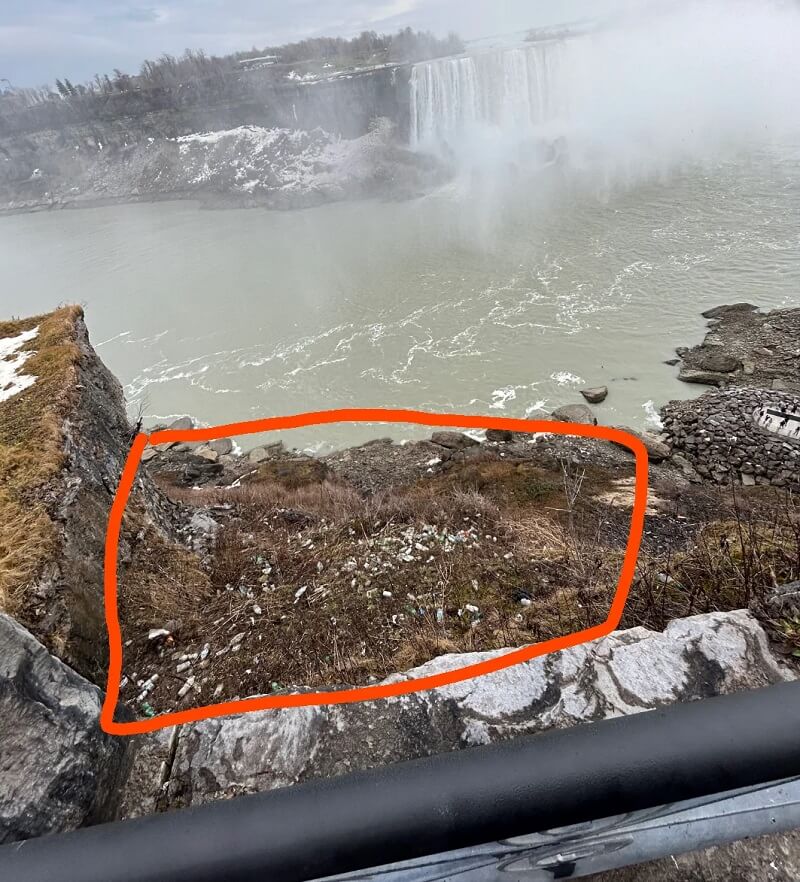A visitor enjoying Niagara Falls was distracted by the sight of something unsavory: a heaping pile of trash.
They posted a photo of the frustrating scene to the subreddit r/mildlyinfuriating.
"Tourists from all over," one commenter wrote angrily. "It's infuriating."

Indeed, there are countless examples of tourists being disrespectful toward the very places they're traveling to visit, souring the experience for visitors such as this one.
These "tourons" — the name is a combination of "tourist" and "moron" — are infamous for behaving recklessly and endangering themselves and others, whether it's stopping traffic to take a photo with wildlife, littering, or even driving across fields of rare plants. Thanks to tourons, it's common to find piles of garbage after holiday weekends.
Unfortunately, the flow of tourists to national parks is only increasing; visitor numbers have more than doubled in the last 30 years, according to the National Park Service. And only two out of five are taking their trash with them when they leave, which is why it often finds its way to the park's scenic vistas.
National parks are starting to fight back. Some places in the United States have banned certain tourons, though this approach is still uncommon. And other places, such as Carnarvon National Park in Australia, issue steep fines for intentionally veering off trail — sometimes going as far as to search down tourons who posted photos of their illegal selfies online.
But littering and pollution is a problem in every corner of the world, and it's not just because of tourons. From leaving confetti in parks to balloon scraps in forests, human-made garbage is everywhere.
Plastic pollution isn't just unsightly either — it's dangerous. Discarded trash releases toxins into the environment, harming soil and plants. Litter also can become breeding grounds for bacteria and disease-carrying parasites. And once garbage is in an environment, it's usually there to stay; most litter, especially plastic, doesn't break down over time or at all.
Additionally, animals often end up confusing brightly colored trash for food. They eat it and then starve to death with stomachs full of garbage. Smaller animals often crawl inside bottles and cups and become stuck.
So, it's crucial to remember to follow the principles of Leave No Trace, including recycling, ditching single-use plastics, and looking to help keep shared areas beautiful…not full of trash.
Join our free newsletter for cool news and cool tips that make it easy to help yourself while helping the planet.









